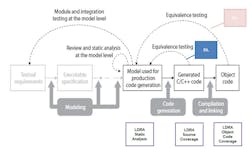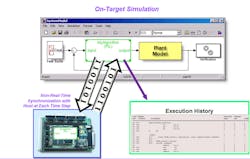LDRA: Graphical debug and process automation speed development
WIRRAL, U.K., 5 April 2013. LDRA, a provider of automated software verification, source code analysis, standards compliance, and test tools, announces the integration of the LDRA tool suite with MATLAB and Simulink, enabling verification of the model at the object code level.
Graphical debug and process automation speed software development, says an LDRA representative. DO-178C object code verification can also be accomplished sooner in the process.
The integration enables the LDRA tool suite to perform verification to the object code level through Simulink-based testing. The LDRA tool suite then can verify that any discrepancies between source and object code caused by compiler or program optimization are corrected in the model. Because the developers are working in the model, the relationships between application components and data elements are transparent. In addition, direct integration of object code coverage enables developers to perform DO-178C object code verification early in the development process.
| Read more -- LDRA integrates tool suite with MATLAB and Simulink, verifies model at object code level |
Automation and elimination of manual steps enables companies to achieve the most rigorous certification levels from their Simulink models, says the representative. Developers can prove that their applications have been tested down to the object code level, fulfilling the demands of DO-178C, Level A.
By beginning the certification process for Level A projects early in the design lifecycle, any issues with compilers generating invalid or extraneous object code are identified and addressed early, the LDRA representative adds. Without this capability, discovery of object code verification errors occur late in the design lifecycle and can result in late stage delays in product release.
While such testing does not obviate the need to test the application in an integrated environment, it does ensure that most, if not all, application defects are identified and corrected prior to this stage, the representative continues. Given the cost and the limited availability of hardware components, the integration of the LDRA tool suite with Simulink and MATLAB ensures that the application can evolve to an advanced level of code maturity and quality before being exercised on the target system; this level of control shortcuts project overruns in both time and cost.
Follow Avionics Intelligence news updates on Twitter (@Avionics_Intel), LinkedIn, and Google+.


